When the lights went out in Texas
Valentine’s Day of 2021 was a disaster in Texas.
Winter Storm Uri made that February 14th the coldest day on record in much of the state.
The further the temperature fell, the more people turned up the heat. Once it hit the freezing point, lights started going out and heaters shut off.
There was an electricity and gas shortage. Texas’s power grid couldn’t meet the soaring demand.
The grid’s operators and electricity producers had failed to invest in weatherizing energy infrastructure. So gas pipelines, windmills, and coal reserves froze and became inaccessible.
And Texas’s grid is unique in that it’s isolated from the rest of the country’s power networks. So they could get electricity from surrounding states.
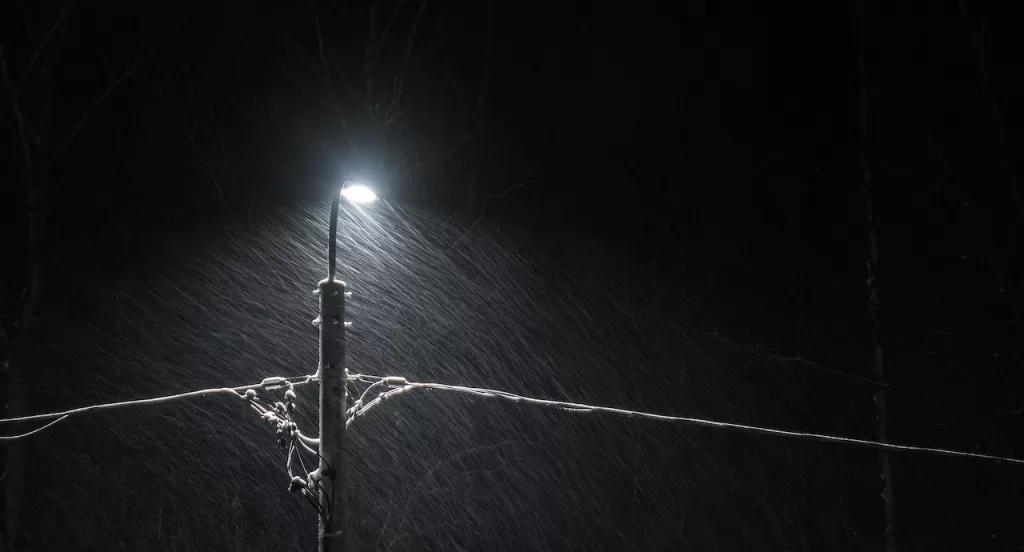
Before all the lights came back on a week later, more than 4 million residents had experienced a power outage.
Extreme weather costs the unprepared
Desperate Texans heated their freezing homes in any way possible. Some powered their heaters with car batteries, while others burned furniture.
Tragically, at least 151 people died from the storm. Many of them had frozen.
Some households avoided outages but received astronomical electricity bills in return. Texas’s deregulated energy market allows different energy companies to sell the same pool of grid energy at different prices – even to people in the same neighborhood.
In Houston, Lisa Khourey didn’t lose power, but her monthly bill was over 100X higher. She was devasted to see it jump from $250 to $9,456.
When signing up with her power company, Lisa had agreed to pay the real-time market rate for energy in exchange for priority access. During Uri, the energy supply was exceptionally low, and demand was extremely high, resulting in massive price jumps for the remaining energy.
Prepared Texans used renewable microgrid power
Meanwhile, a ‘lucky’ few generated electricity while Uri raged. These people turned on their renewable microgrids to create electric islands that avoided the danger, discomfort, and life-altering bills that plagued their neighbors.
In reality, those generating their own electricity weren’t lucky. They were prepared and energy independent. Many had previously electrified their homes and powered them with renewable microgrids.
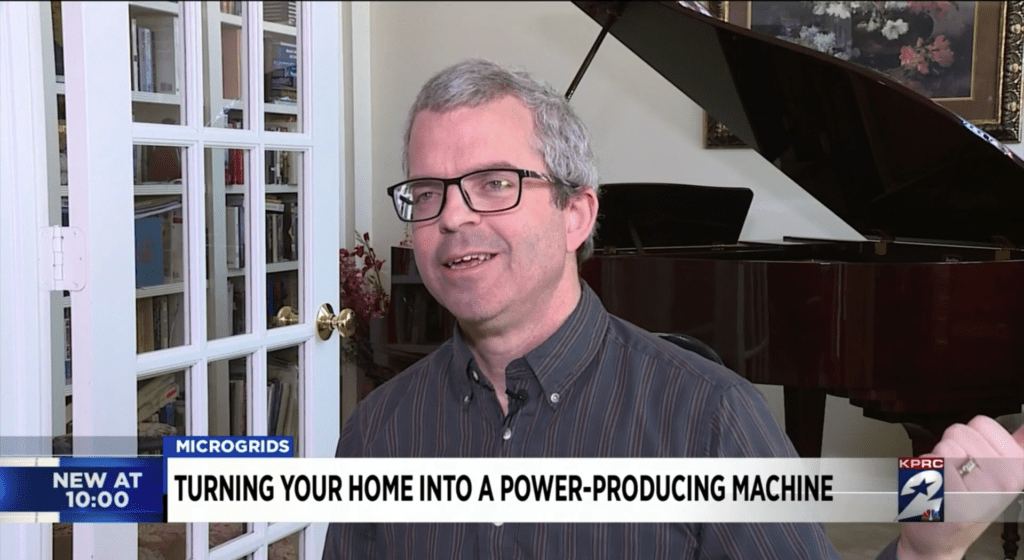
Roger Boneno, a resident of Houston suburb Sugar Land, was one of the prepared. During Uri, Roger’s solar microgrid produced so much electricity that he sold power to the grid. Moreover, having energy independence means Roger’s typical monthly electric bill is $20.
Who uses renewable microgrids?
It’s not just Texans who use renewable microgrids to become energy independent and create electric islands. Across the globe, lives have been transformed by renewable microgrids becoming cost-effective and widely available.
Powering your home, business, vehicle, or tools with a renewable microgrid can improve your life. Today, there are 7 types of renewable microgrid super users.
The 7 renewable microgrid super users:
Are you one of them?
1. Who uses renewable microgrids? Preppers.
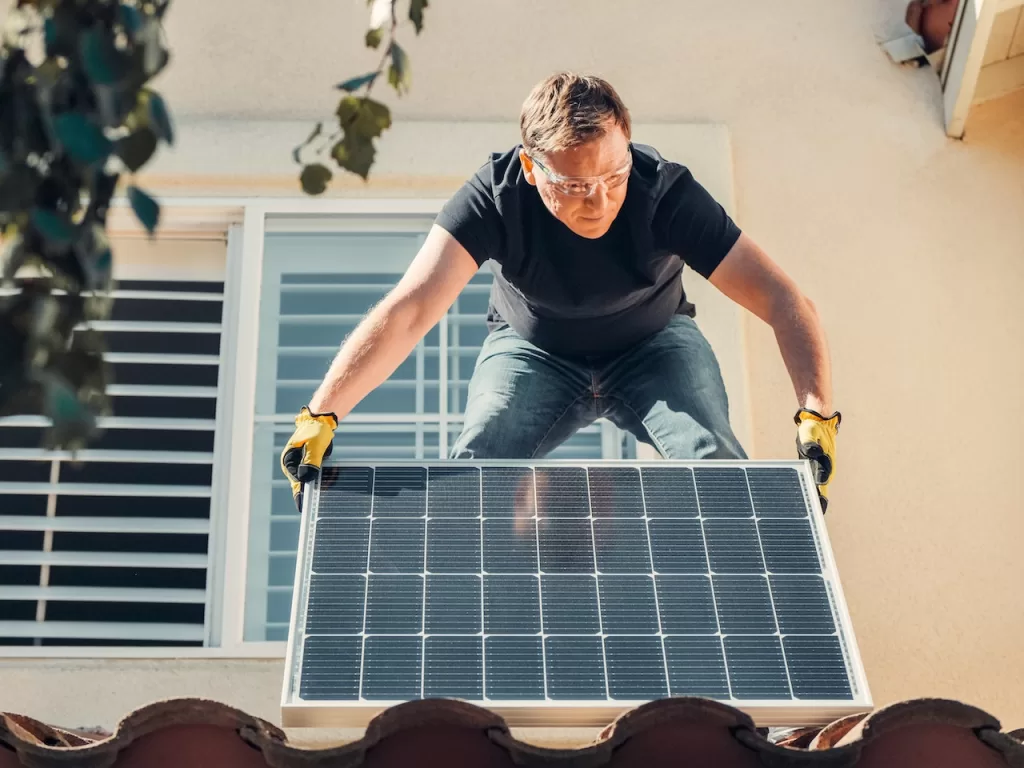
Preppers are people who use renewable microgrids for protection and energy independence.
Why Preppers choose renewable microgrids
Losing electricity is always a nuisance. During natural disasters, it can be fatal.
Preppers know this. They’ve prepared by powering their homes, businesses, and facilities with renewable microgrids. Now they rest assured that they’ll have power no matter how messy things get outside.
Blizzards in Texas
In the aftermath of Uri, U.S. clean energy companies experienced record demand for solar panels and batteries. The disaster in Texas demonstrated to the whole country the fragility of overdependence on energy from the grid.
Preppers recognized that blackouts are becoming more common as weather intensifies and we delay crucial infrastructure investments. They rushed out to get solar microgrids to protect themselves before the next major power outage. Choosing renewable microgrids over fossil fuel generators to avoid the noise, fumes, and running out of fuel.
Winter Storm Uri is a recent extreme example of how lives can be turned upside down or lost when the power unexpectedly goes out. Unfortunately, it’s common.
Hurricanes in Puerto Rico
When Hurricane Maria smashed into Puerto Rico in 2017, it knocked out the grid for months, causing the most significant outage in U.S. history. It became a huge challenge to run clinics, schools, businesses, air conditioning, and even refrigerators, putting a massive strain on the island.
3,000 Puertorriqueños died. Many more abandoned their homes. Save The Children estimates Puerto Rico lost 13 million cumulative education days due to Maria.
In the aftermath, people across set up renewable microgrids to become energy independent. Months before the government repaired the island’s grid, these Preppers had the power back on in their homes and communities.
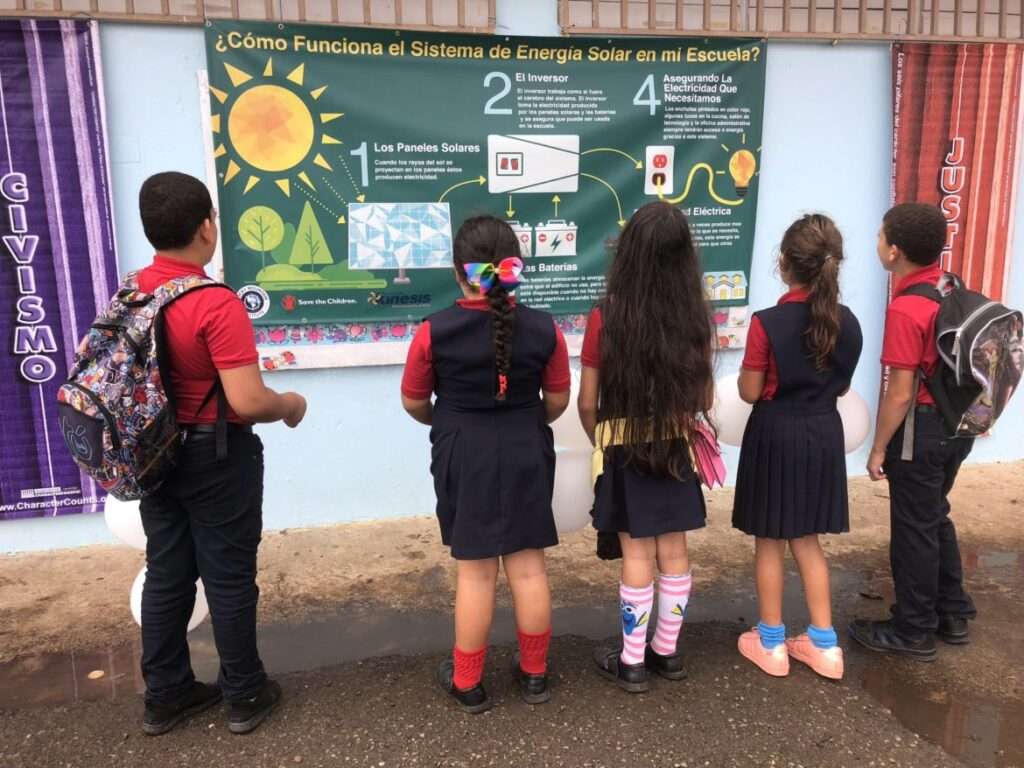
The Segunda Unidad Federico Degetau school in Barranquitas became energy independent by installing a 42-solar panel microgrid. Parents now have the peace of mind that another outage won’t disrupt their children’s education.
The American Red Cross is now working on installing 100 solar microgrids across Puerto Rico to keep kids in school and ensure communities have electrified shelters during natural disasters.
Wildfires in California
For 2 weeks during California’s 2020 fire season, our office overlooking the San Francisco Bay was filled with more smoke each day. The surrounding wildfires kept getting bigger and closer.
On one of the smokiest days, my coworker’s desk was stacked with charging laptops and phones.
He didn’t have power at home. To slow the spread of nearby wildfires, his town was under a Public Safety Power Shutoff (PSPS). Local powerlines were unelectrified to prevent sparking more fires if they broke.
As the fires came closer, his family was put under evacuation watch. Without electricity, tracking the fires’ movements, getting safety updates, and hearing evacuation announcements were nearly impossible. The office was a safe, reliable place to charge critical devices.
He rushed home after a couple frantic hours of charging in the office.
In the end, his home wasn’t evacuated. Thankfully. Many people nearby weren’t so lucky.
His family vowed never to put themselves in that position again. The terrifying week sprung them into action. Soon after, their home had a solar microgrid.
2. Who uses renewable microgrids? Leapfroggers.
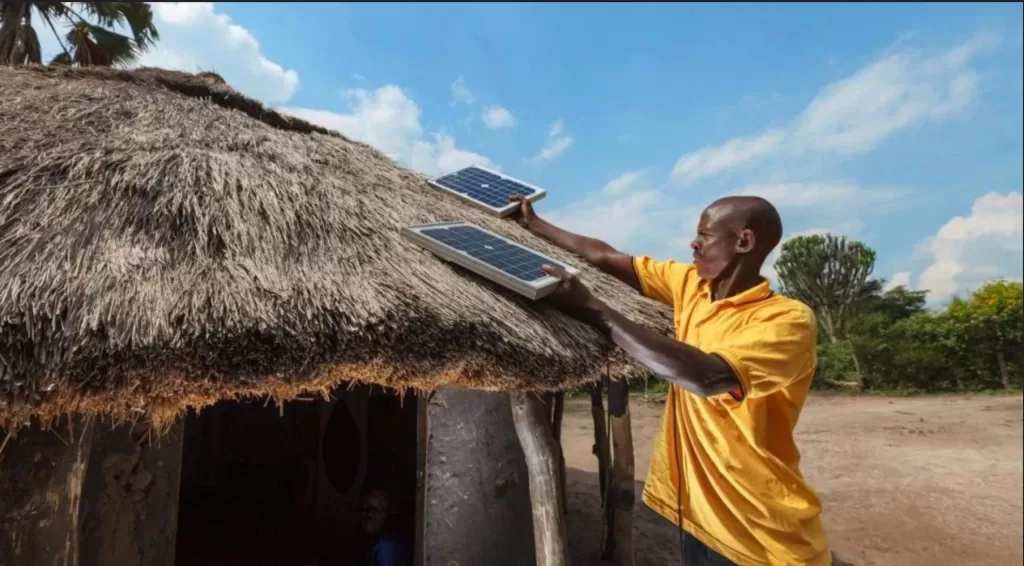
Leapfroggers are people who use renewable microgrids to leap from lacking electricity past the grid and into an electrified life.
Leaping past the grid
If you’re not connected to the grid today, you will likely never be.
A billion of us aren’t.
Most remote regions don’t get serviced by electric utility companies. Urban areas are full of electricity, but it’s often too tricky for many residents to access. And some of us have jobs that take us off-grid for long stretches.
Regardless of why Leapfroggers don’t get power from a centralized grid, they’ve all decided to become energy-independent. Every day more of us leap past grid dependence by generating electricity with renewable microgrids.
Ugandans electrifying
Ugandan energy use and generation are in the midst of a paradigm shift – from millions living in energy poverty to becoming self-electrified Leapfroggers.
Uganda is one of the least electrified countries. 80% of Ugandans don’t have electricity at home.
Many urban centers have an electric grid, but accessing it is prohibitively expensive for the average person. Even if you have the money, there’s often a multi-year wait to get interconnected. Electricity access is more scarce in the countryside, where the grid network is limited areas.
Until recently, most Ugandans could only rely on wood, kerosene, or charcoal for their lighting, heat, and cooking fuel.
These days, people are starting to use pay-as-you-go plans to electrify their homes with solar panels and batteries. While frequently lowering their energy costs.
Many Ugandans first leapfrog into electrification with a single solar panel. The smallest solar systems can charge phones and illuminate lightbulbs. In time, many are to generate more power for themselves by adding batteries and larger solar panels, powering fans, radios, TVs, refrigerators, and computers.
The money to upgrade their solar panels and acquire solar microgrids often comes from their savings on charcoal and kerosene or starting an electrified business.
Others get paid for referring new customers to solar microgrid companies. Like Jacob (pictured above), who earns a commission from his solar microgrid company, Fenix International, when he refers customers. After convincing over 40 of his neighbors to try Fenix’s products, he used the referral payments to purchase the powerful solar system and battery he desired so he could listen to the radio and watch TV at home.
Alaskans transitioning to solar power
The majority of Alaskan communities are situated in remote locations, so they’ve always had to be self-sufficient and energy independent.
In fact, Alaska has some of the first places powered by microgrids. Those first microgrids were diesel-fueled, but winter storms and -46 ºC temperatures often make it prohibitively expensive to transport fuel there.
Plus, burning fossil fuels is causing rapid glacier melting and rising sea levels. An existential threat to Alaskan communities.
That’s why BoxPower was recently hired to provide solar microgrids to towns across the state. BoxPower’s turnkey solar microgrids lower residents’ energy bills and produce electricity without depending on external supply chains or a centralized grid that never reached them.

Off-grid businesses becoming energy independent
For some companies, leapfrogging is the only way to power their operations.
Glencore operates the RAGLAN nickel and copper mine in Nunavik, Quebec, Canada. The mine employs 800 people and uses 18 megawatts (MW) of mission-critical power.
The mine is inaccessible by land and only reachable by sea for several months a year. Making it impossible for RAGLAN to meet its energy needs from a centralized power grid. So, Glencore became energy independent by building a renewable microgrid at the mine.
The microgrid produces electricity with diesel generators and windmills and stores backup power in Saft lithium-ion batteries. Having dual power sources provides the power reliability needed for such a remote facility. Annually, the windmill’s electricity saves RAGLAN from burning over 4 million gallons of diesel.
Remote islands turning the lights on
In the early 2000s, Ben and Lisa sailed to Tonga’s Vava’u island group and decided to create the off-grid Mandala Resort. The resort was constructed on a deserted island using Fibonacci Sequence to blend into the island’s natural surroundings. Furthering the harmony with their surroundings, they decided to power the resort with a solar microgrid.
Today Mandala is powered by a 7-kilowatt (KW) solar system connected to 18 KWs of lead-acid battery storage. There’s a backup diesel generator in case of an issue generating electricity from the solar panels, but most days, the microgrid supplies all of the resort’s electricity.
Typically, by midday, the solar panels have fully charged the batteries that electrify the island at night. The rest of the day, the excess solar energy powers an Ecotech water maker that creates 2,000 liters of fresh water daily.
3. Who uses renewable microgrids? Backcountry-ers.

Backcountry-ers are people who use renewable microgrids to power off-grid journeys.
Unlocking exploration
Our tools for navigation, documentation, and communication require electricity. When traveling in remote areas, generating electricity with portable renewable microgrids opens new terrain and keeps us safe.
Backcountry-ers know that a reliable, replenishable, and transportable power source is vital to responsible adventuring.
Energy independence on outdoor adventures
The LuminAID Titan Power Lantern is always in my wilderness emergency pack. It’s lightweight, collapsible, and powerful, enabling easy travel while ensuring that I have light at night and my phone and satellite communicator stay powered.
“You never know when you’re going to have to set up camp. By having a way to generate my own power, I’ve found it allows me to stay out longer and truly have a ‘base camp’ I can rely on.”
Lindsey Davis
Entrepreneur and Ecologist Lindsey Davis and Himalayan skier Luke Smithwick bring more powerful portable microgrids on trips. Their passions and professions require sophisticated electronics and long stretches in the backcountry. Lindsey and Luke have been ambassadors for Goal Zero because they often rely on the company’s portable microgrids to enable their professions and journeys.

Energizing rescue teams
We all have a friend..or have been the friend…who needed rescuing from an outdoor adventure gone awry. When it’s your turn, you want rescuers’ full attention on the mission, not worrying about whether their tools have enough power.
Electricity is critical for rescue missions. It allows rescuers to power vehicles, satellite phones, medical devices, and shelters. Generating electricity from a renewable source ensures they’re not limited by the fuel they can carry and enhances their nimbleness.
4. Who uses renewable microgrids? Warfighters.
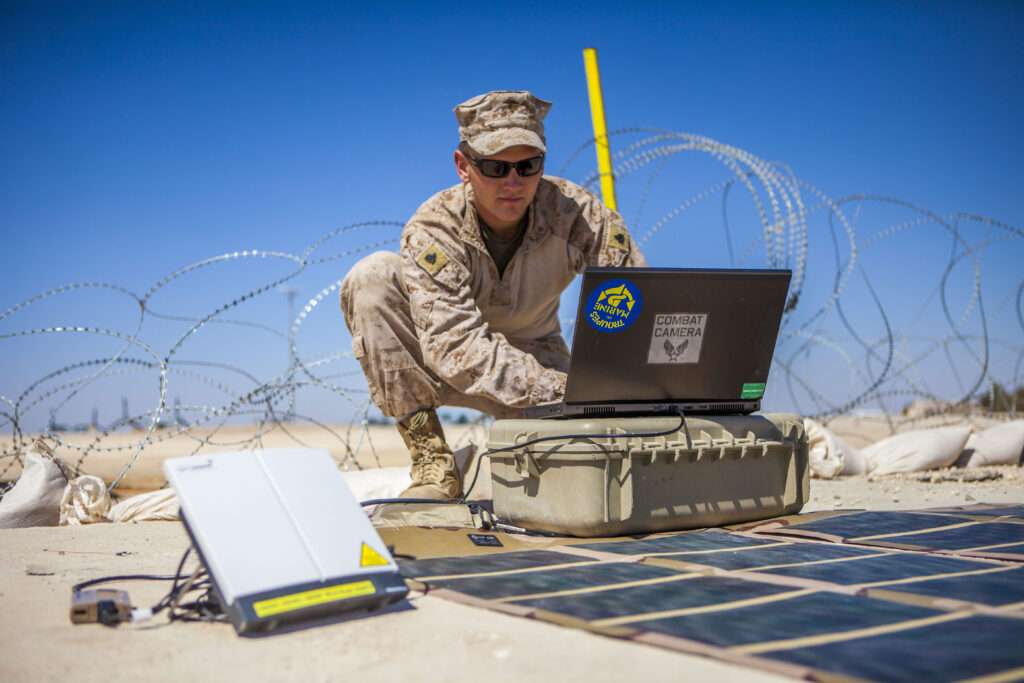
Warfighters are people who use renewable microgrids to gain tactical advantages on the battlefield.
Powering modern warfare
Militaries require energy to power their forces and communicate. Warfighters are using renewable microgrids to generate electricity wherever their missions take them.
Militaries are driving clean energy adoption
Warfighters were some of the first to embrace clean energy and renewable microgrids.
That’s not surprising. Militaries are often the first to develop and adopt revolutionary technologies to gain an advantage on the battlefield. Many of those technologies are later widely used by the general public.
The Internet was created by the U.S. government for military intelligence.
Solar panels were first used to power the U.S. Navy’s spacecraft, Vanguard 1.
During the U.S. occupation in Iraq and Afghanistan, U.S. Marines began relying on renewable microgrids. They used Solar Portable Alternative Communications Energy Systems (SPACES) (pictured above) to transmit imagery and Ground Renewable Expeditionary Energy Systems (GREENS) to power units far from bases and supply lines.
GREENS are portable kits that unfold into large solar panels connected to a power cell. Each provides up to 24 hours of 300W power for every 8 hours of captured sunlight. At peak power, GREENS can provide 1000W.
UEC Electronics, the GREENS manufacturer, has shown that it takes as few as 12 minutes to set up or dismantle. See for yourself…
U.S. Marines travel with portable solar microgrids
The ability to electrify remote outposts and field units is critical for militaries and warfighters of all types. The more self-sufficient soldiers are, the better they’re protected and can control territory.
First Lieutenant Josef Patterson, commander of U.S. Marines India 3/5’s second platoon, oversaw a base in Helmand Province, Afghanistan, that supply lines couldn’t reach for months. He relied on GREENS to provide power and ensure the chain of command stayed in touch. The Lieutenant explained, “If I don’t have [communication] with my troops and my higher-ups, I am lost.”
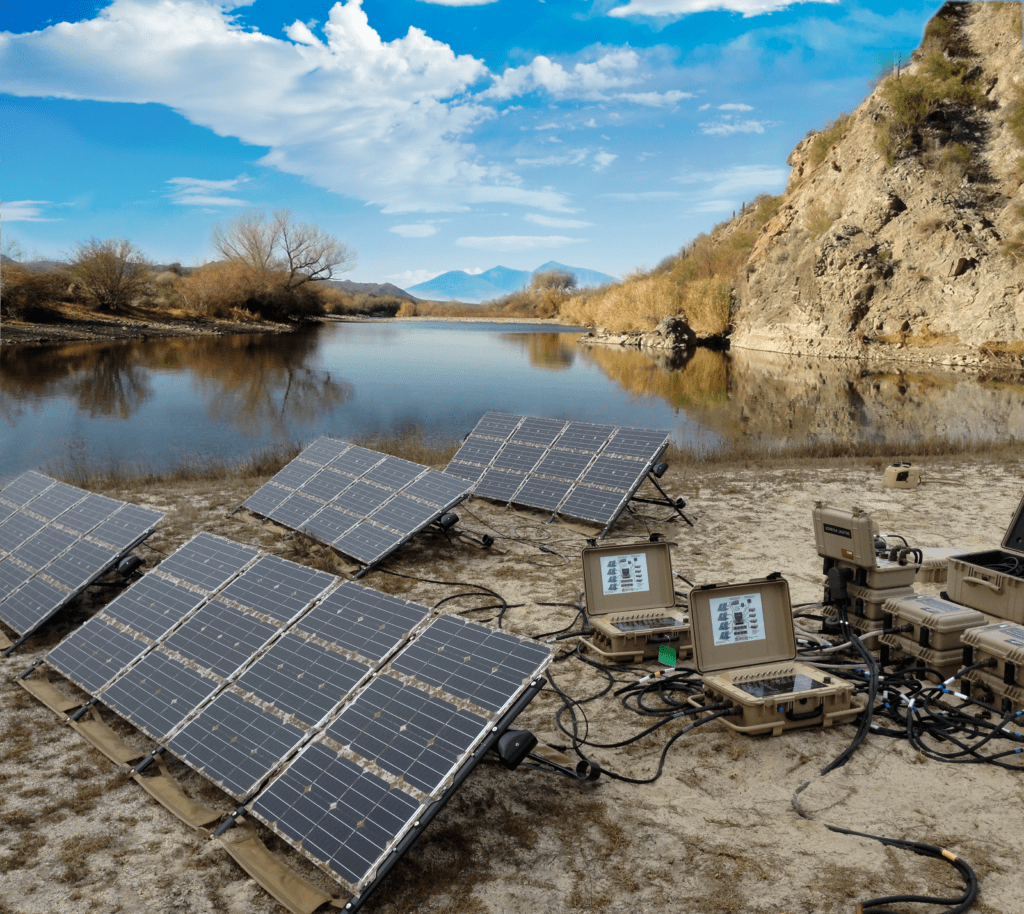
Producing their own energy saves Warfighter’s lives
In addition to being power generators that soldiers can travel with, renewable microgrids solve another major problem for the warfighters. They eliminate the risk of transporting fuel.
From 2003 to 2007, in Iraq and Afghanistan, over 3,000 U.S. troops and contractors died in fuel convoys. That reality is part of the U.S. Department of Defense’s motivation for ‘electrifying the tactical edge,’ which includes developing and deploying electric vehicle fleets and renewable microgrids.
5. Who uses renewable microgrids? Bill-crunchers.

Bill-crunchers are people who use renewable microgrids to save money.
Unlocking financial freedom
In most places, the grid’s electricity prices consistently rise, and for most people energy bills are unpleasant inevitability.
However, Bill-crunchers have figured out how to use renewable microgrids to turn local clean energy into free electricity, lowering their bills and generating financial freedom. For them, it’s fun to see how much free electricity they’ve produced that month, and how much that’s lowered their energy expenditures.
Save money. Generate your own clean electricity.
Energy is can be expensive. Across the globe, saving money is the biggest motivator for switching from burning fossil fuels to using clean energy.
Frequently the electricity produced from clean energy technologies is much cheaper than electricity produced by burning fossil fuels. That’s because clean energy technologies collect locally available renewable energy instead of relying on the labor-intensive and inefficient process of burning of fossilized carbon buried deep in the ground.
And with the price of lithium-ion batteries has fallen 97% since 1991. It’s now cost-effective combine clean energy technologies electricity generation capabilities with and batteries powerful energy storage capabilities to create renewable microgrids. Enabling us to have generate our own clean electricity for less than it costs to buy it from a utility company.
Crunching energy bills in Hawaii
The average person in the United States spends over $3000/yr. buying energy.
Energy bills are considered ‘affordable’ in the US if they consume less than 6% of a household’s income. However, the disturbing reality is that lower-income families typically spend 10% of their paychecks on energy-related expenses.
Hawaii has the most expensive electricity in the United States and the 5th highest poverty rate. On the Hawaiian islands of Oahu and Kauai, solar panels cover roofs everywhere you look. Unsurprisingly, there are many Bill-crunchers in Hawaii with solar microgrids who are saving money on energy bills.
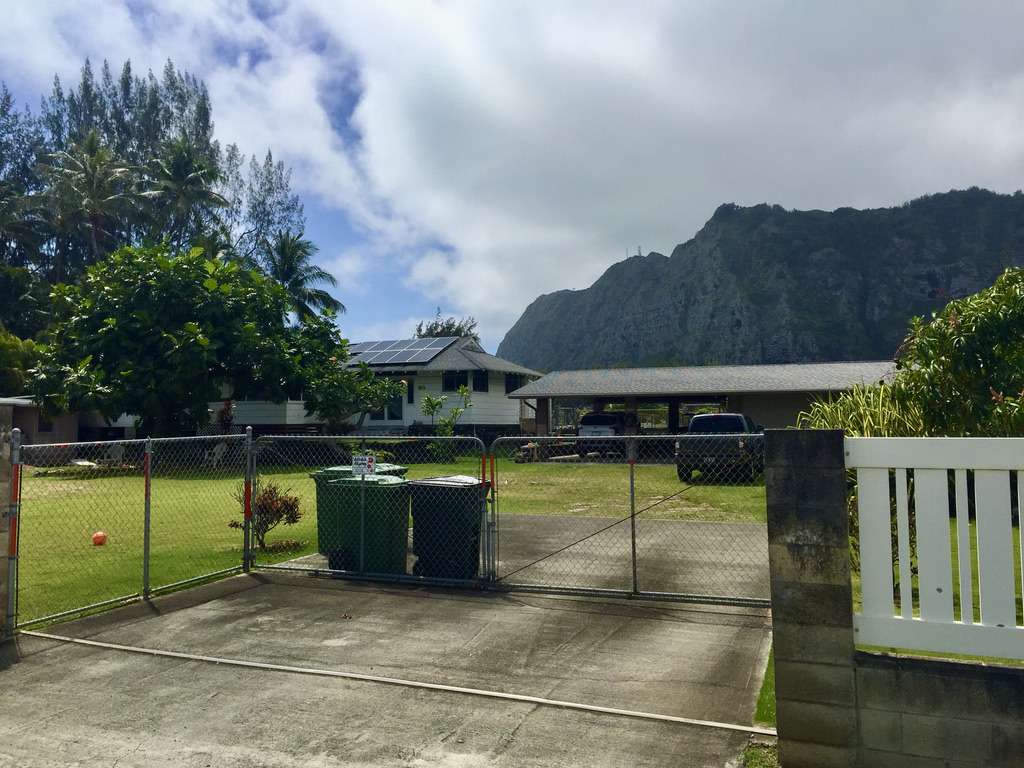
Produce electricity. Arbitrage energy prices.
In addition to renewable microgrids producing free electricity, they can be programmed to save Bill-crunchers more money by arbitraging the utility companies’ electricity price changes.
Depending on your local utility company, the price of grid electricity can shift from hour to hour, minute to minute, and even second to second. With the right software, grid-connected homes with renewable microgrids can ensure you get the best price when buying, or selling, electricity with the utility company.
This ‘rate arbitrage’ occurs by automatically powering your home with the lowest-cost electricity source. The renewable microgrid provides your home with electricity and sells the excess when prices on the grid are highest. It then switches to the grid powering your home and charging its batteries when prices are lowest.
Macy’s does this to prevent its stores from paying high-cost demand charges.
Lowering the cost of doing business
Businesses were some of the first adopters of renewable microgrids. The scale of their energy needs and facilities meant they could crunch energy bills with clean energy technologies and batteries that were much less efficient than today’s.
Macy’s has the 5th most solar capacity of any company in the U.S. In 2017, it installed solar microgrids at 3 stores in Southern California.

Although Macy’s highlights that the solar-powered stores as part of their commitment to protecting the environment, they’ve also stated that adding renewable microgrids was part of their strategy to lower electricity bills by avoiding demand charges.
6. Who uses renewable microgrids? Money-makers.

Money-makers are people who use renewable microgrids to generate wealth.
Generating wealth with renewable microgrids
Many opportunities exist to build businesses and make money by empowering people to generate their own clean electricity and become energy independent.
Money-makers have identified how to do that with renewable microgrids…and they’re cashing in.
Falling tech prices drive new business opportunities
In many countries for more than a decade, the use of renewable energy, particularly wind, and solar, has grown faster than with any fossil fuel. As we’ve discussed, that’s because collecting local energy is always cleaner and is often cheaper than digging up and burning fossil fuels.
With impressive recent advances in battery technology and production, batteries are seeing same rapidly falling price curve that solar panels started to experience over a decade ago. As a result, consumer demand has soared for renewable microgrids. It’s created a massive transition in how we power our lives and the start of a once in a generation business opportunity in the energy sector.
Start-ups and established corporations see the growth in consumer demand for microgrids and are rushing to capitalize on the opportunity. They’re investing to become the go-to sources for renewable microgrid hardware, software, and services.
Selling renewable microgrid hardware
SunPower grows customer revenue with solar microgrids
Want to make your home more energy independent? SunPower can equip, design, equip, and build a solar microgrid for you.
For the past 35 years, SunPower, known as Maxeon outside of the U.S., has produced some of the world’s longest-lasting and most powerful solar systems. With the release of their Sunvault battery in 2020, they began offering homeowners powerful, durable, and attractive solar microgrids.
Selling batteries to solar customers and offering virtual power plant (VPP) services to these microgrid owners recently became a key focus for the company. These new offerings increase the lifetime value of customer relationships and underline the company’s pivot from a solar panel manufacturer to a clean energy services company.
I know, I worked at SunPower when the pivot occurred. But as Levar Burton says, “don’t take my world for it.” Listen for yourself to recent SunPower earnings calls where it has stated that the company and its investors see the generation of microgrid customers as critical to long-term growth.
BoxPower builds rapidly deployable renewable microgrids
What’s the best way to ship a renewable microgrid? In a shipping container.
So what’s the best way to build a renewable microgrid that needs to be rapidly delivered across the globe? BoxPower believes it’s as a part of the shipping container.
Once their shipping containers arrive at their destinations, the solar panels are positioned on container’s roof and oriented to collect the optimal amount of sunlight.
In the aftermath of the 2010 earthquake in Haiti, BoxPower’s founder saw the dire need for refrigeration in communities without power. Since then, Californian towns impacted by wildfires, off-grid Alaskan communities, and hurricane-hit cities on the Atlantic coast have purchased BoxPower’s products to escape power outages.

CleanSpark power Bitcoin mining with wind microgrids
Bitcoin mining has become highly profitable as the cryptocurrency’s value soared over the past few years, but computing power for mining requires a massive amount of electricity. If Bitcoin were a country, then it would be in the top 30 most energy-consuming.
As a result, the price of electricity significantly impacts Bitcoin miners’ profits, and Bitcoin buyers demand mining that’s powered by clean energy. So renewable microgrid companies have been lining up to offer miners affordable, reliable, and clean energy.
In 2018, CleanSpark began building a wind microgrid to power 23 mobile Bitcoin mining stations in Atlanta, Georgia. With the success of that project, Cleanspark now wants to expand its microgrid offerings to large-scale miners who annually use 10 to 100 megawatts (MW) of electricity.
Virtual power plant membership and profits
Virtual power plants (VPPs) are networks of distributed energy resources (DERs), such as electric vehicles, batteries, and renewable microgrids. The VPP pools and coordinates the use of each DER’s stored energy and electricity production.
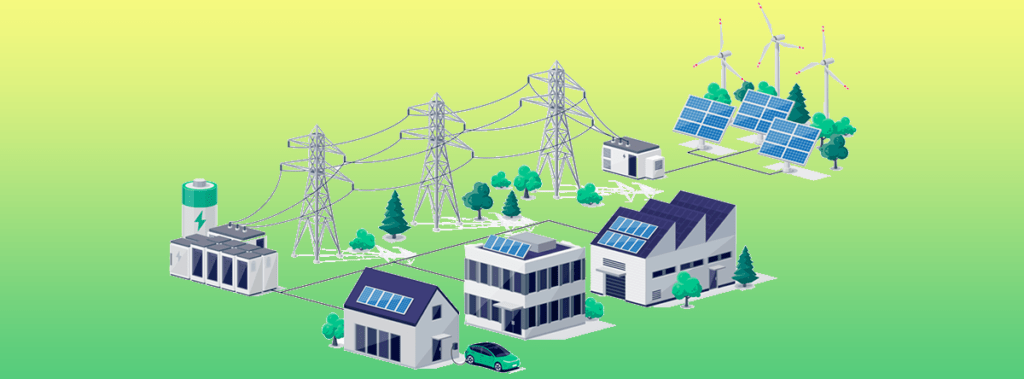
The VPP’s pooling of resources creates economies of scale that enable its members to sell their power and storage at better prices.
VPPs’ arbitraging of rates is so powerful that SunPower estimates their customers will save at least $100, and up to $1000, per year by participating in their local VPP. General Electric expects its VPP members in Portland, OR, to earn $20-40/month just from renting their excess battery storage.
DERs are become more powerful and widespread, VPP networks are scaling, and energy prices keep increasing, so this sector is rapidly evolving. It’s one to keep your eyes on.
7. Who uses renewable microgrids? Pro-lifers.
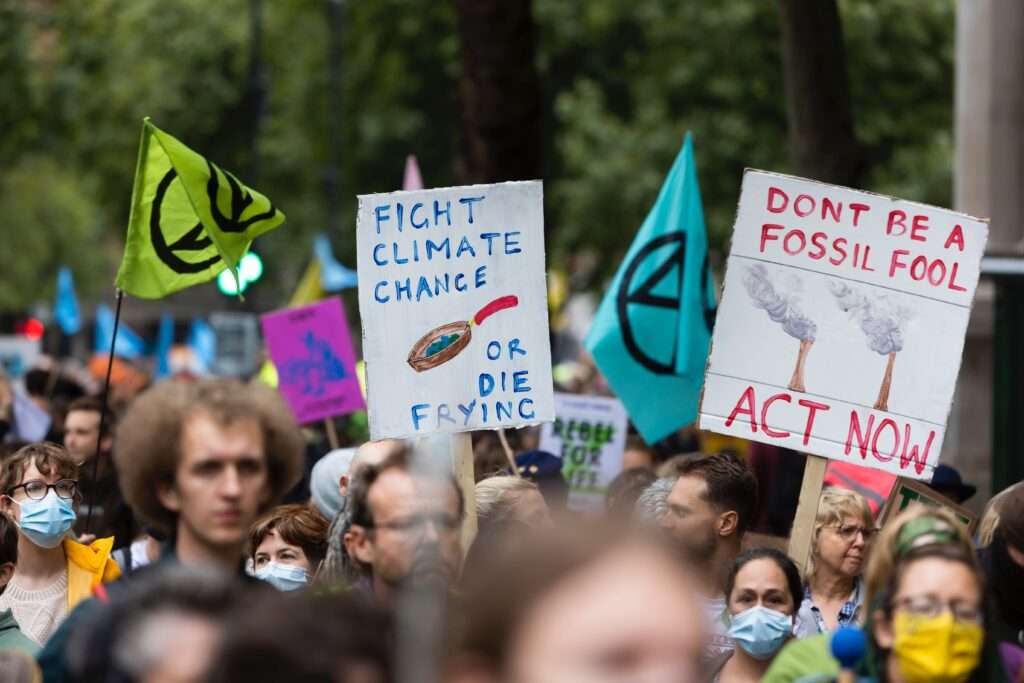
Pro-lifers are people who use renewable microgrids to save us from the Climate Crisis.
Offering new path forward
We’re on track for global catastrophe caused by climate change in the coming decades. But it’s not fate. That doesn’t have to be our future.
No one person can stop the escalating human-made climate crisis, but we can all fight against it.
Pro-lifers have taken this to heart and decided to use renewable microgrids to power their lives with clean energy, create a more harmonious future, and adapt to the new extreme weather we’re already experiencing.
The current climate trends
Cleopatra ruled Egypt the last time temperatures rose as much as they have over the past 50 years. More troublingly, the Earth hasn’t been this hot since before the last ice age.
The Earth’s heating has been directly caused by us burning ever more fossil fuels since the industrial revolution began in the 1850s.
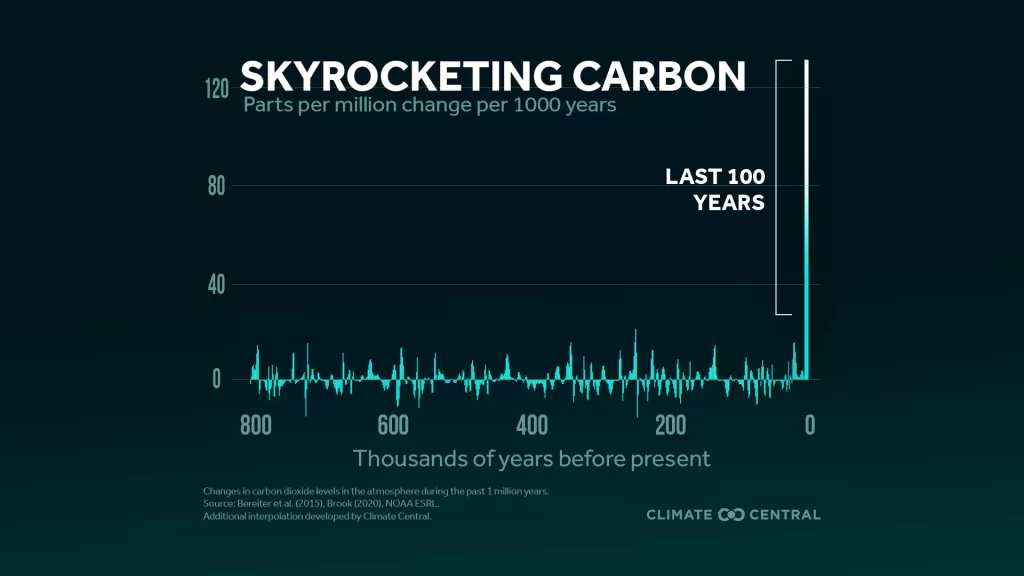
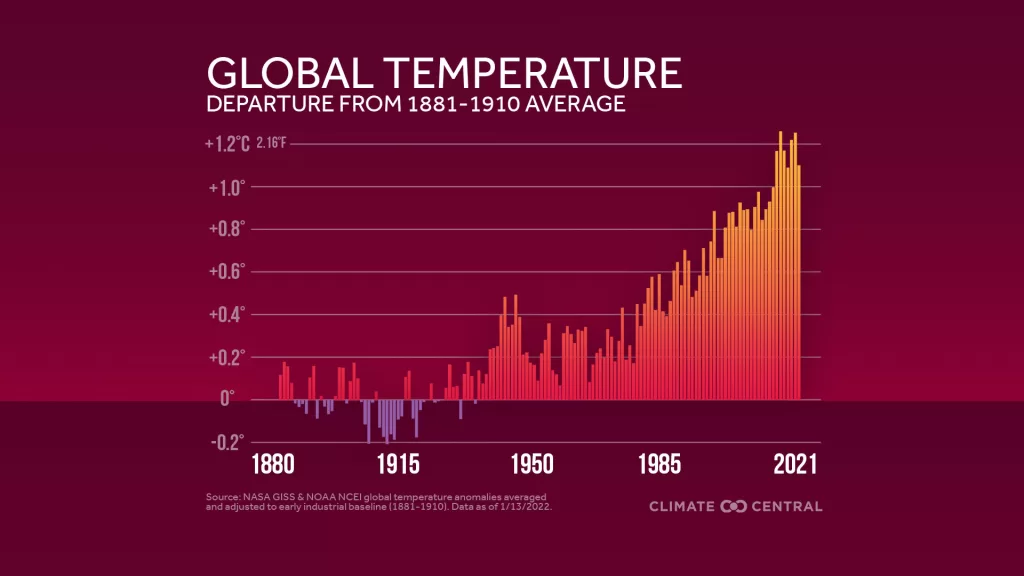
If we immediately take drastic action to stop burning fossil fuels, it’s still likely too late to save 1 in 10 people and 570 cities from regular flooding in less than 30 years.
Many towns, and likely some countries, will be wiped off the map by 2050. The U.S. Gulf and Atlantic coasts are particularly vulnerable. New York and Miami join Shanghai and Bangkok among the world’s major cities that will most frequently flood.
Unfortunately though the impacts aren’t just in the future. Fossil fuel pollution will kill over 8 million of us this year. People living in small industrial towns in Asia, Chile, and Italy are particularly exposed to this air pollution, as well as those living in cosmopolitan cities like Deli, Hanoi, Dubai, and Shanghai.
Electrifying everything can prevent a climate catastrophe
In the Energy Gang’s podcast episode, A Wartime Plan for Electrifying America, Saul Griffith of Rewiring America walks through how we can prevent the climate from warming 2°C above pre-industrial temperatures.
Among the numerous tragic repurcussions triggered by exceeding 2°C, coral reefs will disappear, heatwaves will frequently last for months, and mass migrations will occur across the globe to escape drought, fires, and famine.
Thankfully, Saul has crafted a plan that can keep warming below 2°C. It’s the first time I’ve seen an option that limits warming below catastrophic levels and is technically feasible while improving our quality of life.
The plan is to “electrify everything.”
Saul calculated that if all the fossil fuel-burning machines in existence today operate for their entire working life, then we’ll lock in 1.8°C of global warming. So if we upgrade all of these machines to electric ones once they need replacement, and get our electricity from renewable sources, we’ll avoid the destruction of 2 °C warming.
The power of clean electricity
Today, most climate-warming emissions come from our transport, businesses, and homes. Powering yours with renewable microgrids means you’ve essentially eliminated your climate-changing emissions and can reap the numerous benefits we’ve discussed.

The Welsh family living in the Bron Yr Aur where Led Zepplin wrote Stairway to Heaven made their home emission-free, and are prospering from it. The cottage is powered vy a wind, solar, and hydro-powered microgrid, which saves $16,000/year on energy bills.
For perspective on how much pollution this single renewable microgrid prevents, consider that each year a Welsh family of 4 consumes as much electricity as is produced by burning 100,000 pounds (lbs.) of coal or 200 barrels of oil each year. In Brazil, that same family consumes over 100 oil barrels; in China 180; and U.S., families-of-4 consume over 500 barrels annually.
A recent study from the University College of England shows that we’ll limit global warming to 1.5°C if by 2050 we can leave 60% of the earth’s remaining oil and almost all of its coal in the ground.
Keeping warming below 2°C is necessary for our survival. Managing to keep it below 1.5°C means we’ll prevent massive global suffering.
So, will we start powering our lives with clean electricity soon enough to save our children and grandchildren from a world we’re ashamed to leave behind?
We can. It’s up to us. We can start today by starting to generate our own clean electricity with renewable microgrids.
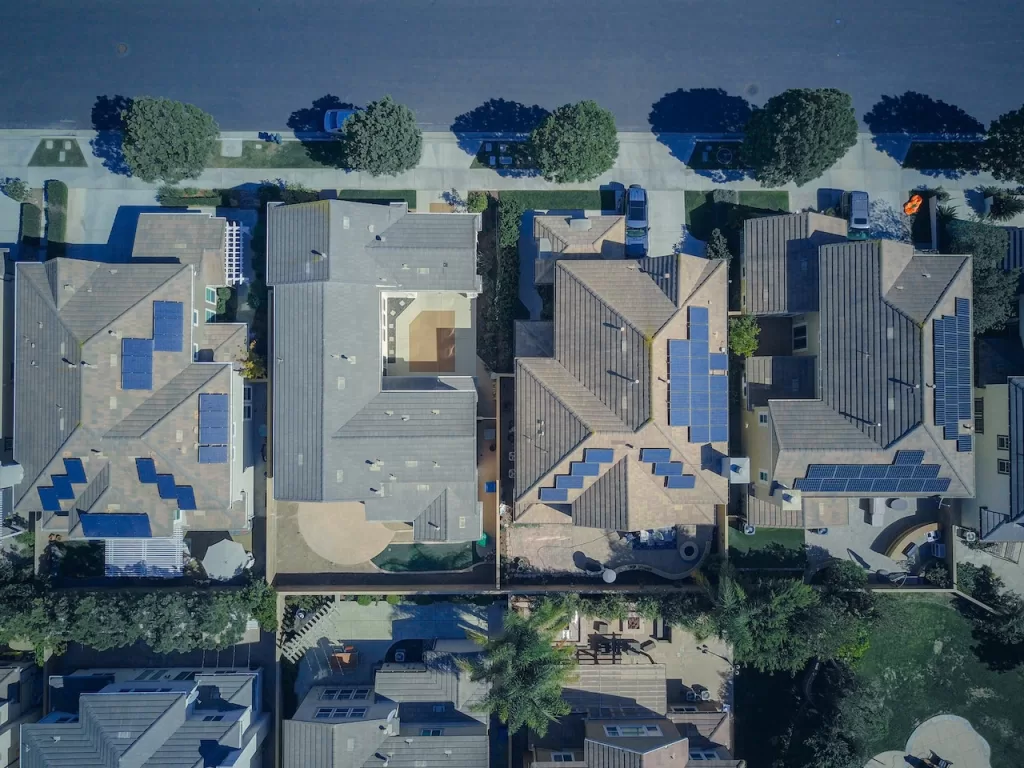
Adapting to the intensifying weather
At the same time that we’re creating a cleaner, safer future, we need to recognize the reality that we’ve already created extreme weather that will continue to intensify for decades. It requires us adjust, adapt and become more reslient so we can survive and thrive in this new world.
Societies built utility grids to more reliably provide us with critical services. But these days, grids’ centralized networks and outdated infrastructure make us increasingly vulnerable. Many weren’t built to withstand strong winds, severe droughts, powerful blizzards, and the other extreme weather that we now regularly experience.
Forward-thinking utility companies are adding microgrids to the grid to make their networks less centralized and more resilient. Many of these electric utilities also started deploying mobile microgrids when weather prevents the grid from servicing a region.
Renewable microgrids generate clean electricity, reducing the fossil fuel emissions that make weather more extreme. And when extreme weather events occur, these microgrids often offer the most reliable electricity.
Renewable microgrids’ ability to self-power indefinitely frees you from depending on an outside network. Having one means you can keep the lights on, refrigerate food, stay cool (or warm), contact emergency services, and follow local news regardless of what’s happening outside.
That’s invaluable when thunderstorms knock out power lines, as happened twice while writing this. Or when the utility company cuts off power to your town, as my coworker experienced when wildfires blazed nearby.
The Electric Islands community
Most people aren’t even aware that renewable microgrids exist. Let alone who uses renewable microgrids.
Yet almost all of us belong to at least 1 of the groups identified. And, it’s a broad spectrum of humanity who can benefit from energy independence. This has convinced me that by 2030 almost everyone will own at least one renewable microgrid.
For now, you’ve joined the small but growing and culture-shaping community that recognizes electric islands are at the forefront of this century’s energy evolution.
We’re ahead of the pack in recognizing that the world is quickly moving to a fully electrified world powered by decentralized networks and clean electricity.
There are benefits to being ahead of the pack. Here are a few ways to take advantage of them…
Impress friends with your own electric island
When you’ve cut your energy bills, lit up a campsite, or provided refuge during an outage, those around take notice.
Create your own electric island with renewable microgrids from these companies:
Energy Sage is one of the best places online to compare quotes from local providers of microgrids for homes, businesses, and facilities.
LuminAID and Goal Zero offer portable solar microgrids perfect for your backpack, vehicle, or apartment.
Leapfrog past the grid
1 in 7 of us doesn’t have electricity at home. Renewable microgrids are distributed energy resources, so this no longer has to be our reality. Now it’s not up to governments and corporations if we can access their energy. We can leapfrog the grid.
Get in touch with organizations like Ilumexico and Empowered By Light to support leapfrogging and leapfroggers.
Ilumexico is a beautiful example of young people using renewable microgrids to address energy inequality in Latin America. They’ve electrified thousands of homes, creating a model for expanding energy access to remote and lower-income communities from a broad cultural range.
Stay ahead of the pack
Knowledge is power. Follow these sources to have the latest information on renewable microgrids:
Microgrid Knowledge is an authority on conventional and renewable microgrids powering businesses and extensive facilities.
Greentech Media is one of the most trusted sources of clean energy news. Their microgrid newsfeed is a great place to track news and current events.
And, of course, join the Electric Islands mailing list and follow us on social media for remarkable microgrid content sent directly to you.
